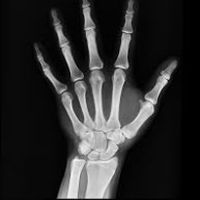
"3D printing has utterly changed my workflow. As a surgeon, it helps me plan my operation and gives me a better understanding of what I'm dealing with so I don't have any surprises in the operating room. With modern radiology software, you can see a virtual model on-screen, but there's nothing like holding a model in your hands."
- Boyd Goldie, Consultant Orthopedic Surgeon, MBBS, BSc, FRCS, DHMSA
Dr. Boyd Goldie, Consultant Orthopaedic Surgeon - The Holly Private Hospital, London, treats patients with conditions associated with the upper limbs including: the shoulder, elbow, wrist and arm. He carries out a range of emergency and elective procedures and provides several different upper limb treatments for his patients. Dr. Goldie is a pioneer in the use of 3D printers in orthopaedics and has lectured extensively on the topic. He uses the technology regularly in his practice. 3D printing helps him educate patients and facilitates the planning of complex surgeries by using 3D printed models as a guide during the operation. The technology offers numerous benefits, including better surgical preparation, significant reduction of surgical costs and more opportunities for better patient education.
Challenge
3D printing is commonly used in complex surgery, but most surgeons order externally made 3D prints. Dr. Goldie wasn't content with this arrangement. It was very expensive (hundreds of pounds per print) and took weeks for the 3D prints to be delivered. As Dr. Goldie says: "This is no good if you have a guy with a broken wrist and you're going to operate tomorrow."
Solution
Dr. Goldie purchased an Ultimaker 2+ 3D printer. When used in combination with open-source software (slicer.org), he can 3D print accurate fracture replicas in a matter of hours; depending on the size of the area. Dr. Goldie explains how it works. "I ask the radiographers to put the CT onto a disk. You can then extract the files and import them into the software to make the finals for the 3D printer."
Results
This process benefits Dr. Goldie and his patient. The patient gains a deeper understanding of the problem and how the doctor will address the issue. Dr. Goldie is better prepared and careful surgical preparation reduces surgery times. This makes 3D printing a cost-effective innovation for all procedures. It's less expensive and faster than using conventional surgical equipment.
Other benefits include:
- Simplified communication with patients through tangible models
- Optimized surgical planning with reduced operation times
- Low-cost, effective visualization aids
- Customized parts tailored to fit any unique requirement
Costs
3D printing costs depend on both model size and degree of complexity. On average, a wrist-bone print requires 1.5 m of PLA and an upper arm bone needs 7.3 m. With Ultimaker 2+ in the office, surgical planning time was reduced from weeks to just a few hours and costs were lowered by 100 times.
